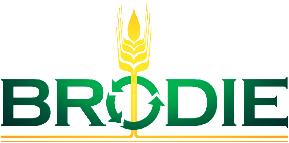Volume 102, Issue 3, pages 2173-2187, March 2019. The objective of this study, made by Canadian researchers at the University of Saskatchewan, was to determine if the quantity of concentrate provided in an automated milking system (AMS) affects dry matter intake (DMI), visits to the robot, milk and milk component yield, feeding behaviour, cow activity and ruminal fermentation of lactating dairy cows fed diets with the same energy (isocaloric).
Cows housed in a freestall barn with a guided-traffic-flow (feed-first) barn design were offered different amounts of pellet (0.5, 2, 3.5 or 5 kilograms dry matter per day) in the AMS, with an equivalent reduction of the same pellet in the partial mixed ration (PMR). As expected, the amount of pellet consumption increased according to the amount of pellet available in the milking robot, but the PMR DMI decreased linearly with increasing AMS concentrate allocation, with the total DMI (PMR + AMS) remaining constant (25.3 kilograms).
Other than a linear decrease in milk urea nitrogen (MUN) as the amount of pellet increased, no other parameters were affected [milk yield (37.5 kilograms per day), milk components yield (1.43 kilograms per day fat and 1.22 kilograms per day protein), DMI, milking frequency (3.22 milkings per day), rumen pH (6.18), time spent lying, number of lying bouts and average bout duration]. An important aspect of these studies is to try to understand how cows replace one feed (PMR) with the other (AMS pellet).
This is called the substitution ratio. In this study, that ratio was 1-to-1, but the authors indicate this ratio does not appear to be consistent across studies, and ratios as low as 0.84 and as great as 1.58 have been reported. Because of this, the authors indicate the inability to predict the substitution rate precludes the ability to impose precision feeding management strategies when simply altering the quantity of a single pellet.
Overall, the authors concluded that under isocaloric dietary settings, increasing the supply of pellet in the AMS is not likely to affect voluntary visits to the AMS, milk and milk component yields or ruminal fermentation. Also, feeding smaller quantities (less than 5 kilograms) of concentrate in the AMS should minimize variability in nutrient intake and allow cows to achieve target AMS consumption while not affecting AMS visits and the yield of milk and milk components.
“Drinking water intake of newborn dairy calves and its effects on feed intake, growth performance, health status and nutrient digestibility.” Volume 102, Issue 1, pages 377-387, January 2019. Although it is recommended to offer free drinking water immediately after birth, the authors of this study say producers wait, on average, 17 days to first offer drinking water to newborn dairy calves (USDA’s National Animal Health Monitoring System study in 2014).
This is not new, since the NAHMS study from 2007 also indicated producers waited, on average, 15 days to first offer of drinking water. There are studies evaluating the importance of water for pre-weaned calves (Kertz et al., 1984), but on those studies the calves had a limited amount of milk available, so having access to water would be more important.
The objective of this study was to examine water and feed intake, growth performance, health status and nutrient digestibility of Holstein heifer calves offered drinking water from birth (W0) as compared with those offered it at 17 days old (W17), when fed an ad libitum volume of milk. Calves had free access to drinking water and a starter ration until they were 70 days old. Drinking water intake, starter intake, milk intake, ambient temperature and fecal consistency were recorded daily.
Bodyweight, hip height, hip width, heart girth and body length were measured weekly. Blood (drawn from jugular vein) was analyzed for hematocrit and haptoglobin (a marker of infection and inflammation) concentrations at 14 days old. On days 69 and 70, total fecal output of individual calves was measured and analyzed for chemical composition to determine apparent total tract digestibility of nutrients.
When offered from birth, newborn calves consumed 0.75 plus or minus 0.05 kilogram-per-day water aside from the water they received from ad libitum milk allowance during the first 16 days. Once offered, W17 calves drank more water (59 percent) than W0 calves during the pre-weaning period.
Starter intake of W0 and W17 calves was similar, but W0 calves consumed 0.285 kilogram per day more milk and tended to achieve greater bodyweight and heart girth compared with W17 calves during the pre-weaning period. Offering water from birth versus offering it later did not affect the number of days with diarrhea, intensity of diarrhea or blood hematocrit and haptoglobin concentrations of pre-weaned calves.
Despite a similar starter intake, W0 calves had greater hip height, body length, apparent total tract digestibility of acid detergent fibre (ADF) and neutral detergent fibre (NDF), and feed efficiency than W17 calves post-weaning (50 to 70 days old). When followed up to 5 months old, W0 calves had greater bodyweight than W17 calves. Provision of drinking water immediately after birth could improve growth and development of calves pre- and post-weaning, potentially by stimulating rumen development, thus increasing nutrient availability. ![]()

-
Pedro Nogueira
- Nutritionist
- Shur-Gain
- Email Pedro Nogueira
This column brings you information regarding some of the research being done around the world and published in the Journal of Dairy Science (JDS). The objective is to bring to light areas of research that may have an immediate practical application on a dairy farm, as well as research that, even though may not have a practical impact now, could be interesting for its future potential application. The idea is to give a brief overview of select research studies but not go into detail on each topic. Those interested in further in-depth reading can use the citations to find each study.









